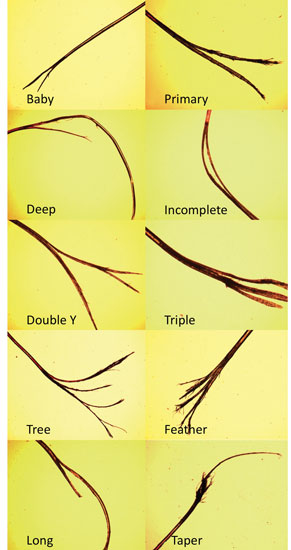How to Get Waves: Effective Techniques to Achieve Stylish Curls in 2025
As we move into 2025, the quest for the perfect waves is a blend of artistry, technique, and respect for the ocean. Whether you're a seasoned surfer or a beginner, understanding how to get waves goes beyond just physical skill—it involves immersion in surf culture, science, and safety. In this comprehensive guide, we'll explore effective techniques, discuss diverse wave types, and delve into the necessary gear for every surfer. You will also gain insights into beach etiquette and essential safety tips to enhance your surfing experience. Let’s catch those waves!
Master the Basics: Fundamental Techniques for Surfing Waves
To truly understand how to catch waves, we must first explore the core principles of surfing. Mastering these fundamentals ensures that both beginners and experienced surfers can navigate the ocean's energy with confidence and skill.
Understanding Wave Dynamics: The Physics of Waves
Waves are formed by the interaction of wind and the surface of the ocean. Understanding wave dynamics is crucial for any surfer. Ocean waves can vary significantly in size, shape, and breaking patterns, influenced by factors such as wind speed, direction, and ocean currents. The science behind wave formation—the energy transfer from wind to water—plays a vital role in surfing. Surfers often utilize wave height and direction data to choose the best waves for riding. Familiarizing oneself with these concepts can greatly improve wave selection and riding techniques.
Choosing the Right Surfboard: Making the Perfect Selection
Your surfboard is your lifeline in the water. Different types of surfboards cater to varying skill levels, wave types, and rider preferences. Beginners may benefit from wider, stable boards, while experienced surfers might lean toward performance boards for agility. Factors such as board length, volume, and design can impact your performance as you learn to paddle, balance, and ride waves. Researching surfboard types and consulting with local surf shops or schools can help you make an informed choice.
Paddling Techniques: Perfecting Your Approach
Paddling is one of the most important skills for surfers, as it directly affects your ability to catch waves. Mastering effective paddling techniques involves building upper body strength and understanding your positioning on the board. Positioning yourself correctly helps maximize speed and reduce drag when making your way toward incoming waves. Additionally, synchronizing your strokes and developing a rhythm can enhance your paddling efficiency, leading to more successful wave catches.
Advanced Techniques: Riding the Waves with Style
With the basics in hand, it’s time to dive into more advanced techniques that will help you ride waves with style and confidence. These skills require practice, dedication, and a willingness to learn from each ride.
Catching Waves: Timing and Placement
Timing your wave catch is a skill that separates good surfers from great ones. As waves approach, determining the right moment to paddle can mean the difference between a successful ride and falling short. Learning to read wave patterns, spotting the peak where the wave will break, and positioning yourself accordingly are essential. Additional techniques, such as popping up quickly and maintaining a stable center of gravity, will enhance your performance once you’re in the wave.
Executing Surfing Maneuvers: From Turns to Aerials
Surfing maneuvers are integral to added flair and personalization of your riding style. Whether executing radical turns, cutbacks, or aerials, every maneuver requires careful coordination, balance, and practice. Consider taking surf lessons focused on specific skills to receive tailored feedback. Understanding how your weight distribution affects board movement is essential for mastering these techniques, and building confidence through repetition will lead to improvement.
Surfing Safety: Essential Tips for a Secure Experience
Surfing can pose risks if safety isn’t prioritized. Understanding local beach etiquette, respecting other surfers, and being aware of ocean currents and tide charts are all critical to enjoying the surf responsibly. Wearing the right surfing gear, including wetsuits for temperature protection and surf boots to prevent injuries, is also advisable. Educating yourself on surfing safety allows you to focus more on refining your skills and enjoying the ocean.

Surf Culture and Community: Engaging with Fellow Surfers
Being part of the surf community goes beyond just hitting the waves; it’s about sharing experiences, learning from others, and contributing to the culture. Engaging with fellow surfers inspires growth and builds connections, making your surfing journey richer and more fulfilling.
Participating in Local Surf Events: Competitions and Festivals
Surf competitions present an exciting opportunity not just to gauge your skills against others but to learn from seasoned surfers. Many local surf spots host competitions and surf festivals that encourage community involvement. Engaging in these events provides invaluable feedback, fostering camaraderie and motivation. Consider participating in clinics or workshops at these events to further enhance your technique.
Environmental Awareness: Sustainable Surfing Practices
As surfers, we have a unique connection to the oceans and coasts that we explore. Sustainable surfing practices help protect the environments we cherish. Engage in coastal conservation efforts and familiarize yourself with the environmental impact of surfing. Choose eco-friendly products and support brands committed to sustainability. This not only enhances our relationship with nature but also inspires a greater appreciation for our ocean playground.
Surfing Media: Stay Updated with Trends and Techniques
Surf photography, podcasts, and magazines are great resources to stay updated with the latest trends in surfing. They serve as platforms for sharing tips, success stories, and surf culture insights. By immersing yourself in surf media, you gain access to invaluable knowledge, expert advice, and an understanding of global surfing dynamics. Join online communities to interact with fellow surfers and share experiences, further enriching your surfing journey.

Q&A: Common Questions About Surfing Waves
What are the best practices for beginner surfers?
For beginners, focusing on basic techniques is essential. Learning balance, proper paddling, and ocean awareness creates a strong foundation. Consider taking lessons to receive professional guidance. Start with small, manageable waves to gain confidence and understanding.
How can I choose the right surf spot?
Choosing the right surf spot depends on your skill level and prevailing ocean conditions. Research local surf reports, understanding tide charts, and observing wave breaks to identify ideal locations. Many local surf schools can guide you to suitable spots for your ability.
What gear do I need to start surfing?
Your basic surf gear includes a suitable surfboard, wetsuit or rash guard, and a leash. Each piece of equipment plays a vital role in your comfort and performance on the waves. As you progress, consider other accessories like surf wax and fins to optimize your board's performance.
What are common surfing myths?
Avoiding common surfing myths is important for beginners. One prevalent misconception is that you must be a certain age to start surfing. In reality, surfers of any age can learn and enjoy the waves. Remember that consistent practice and patience are vital for improvement.
What are some tips for improving my surfing skills?
To enhance your skills, focus on practice and training. Incorporate fitness routines that improve your strength and balance, and consider using a surf simulator for additional practice. Watch tutorials and study techniques from experienced surfers to refine your maneuvers and understanding of waves.
Conclusion: Riding the Waves with Confidence
As you set out on your journey to master the art of surfing in 2025, embracing both the physical and cultural aspects of riding waves is essential. With effective techniques, a solid understanding of wave dynamics, and an appreciation for surf culture, you will find yourself riding the waves with style and confidence. Connect with fellow surfers, contribute to your community, and continuously seek improvement. The ocean awaits—get out there and make the most of it!
